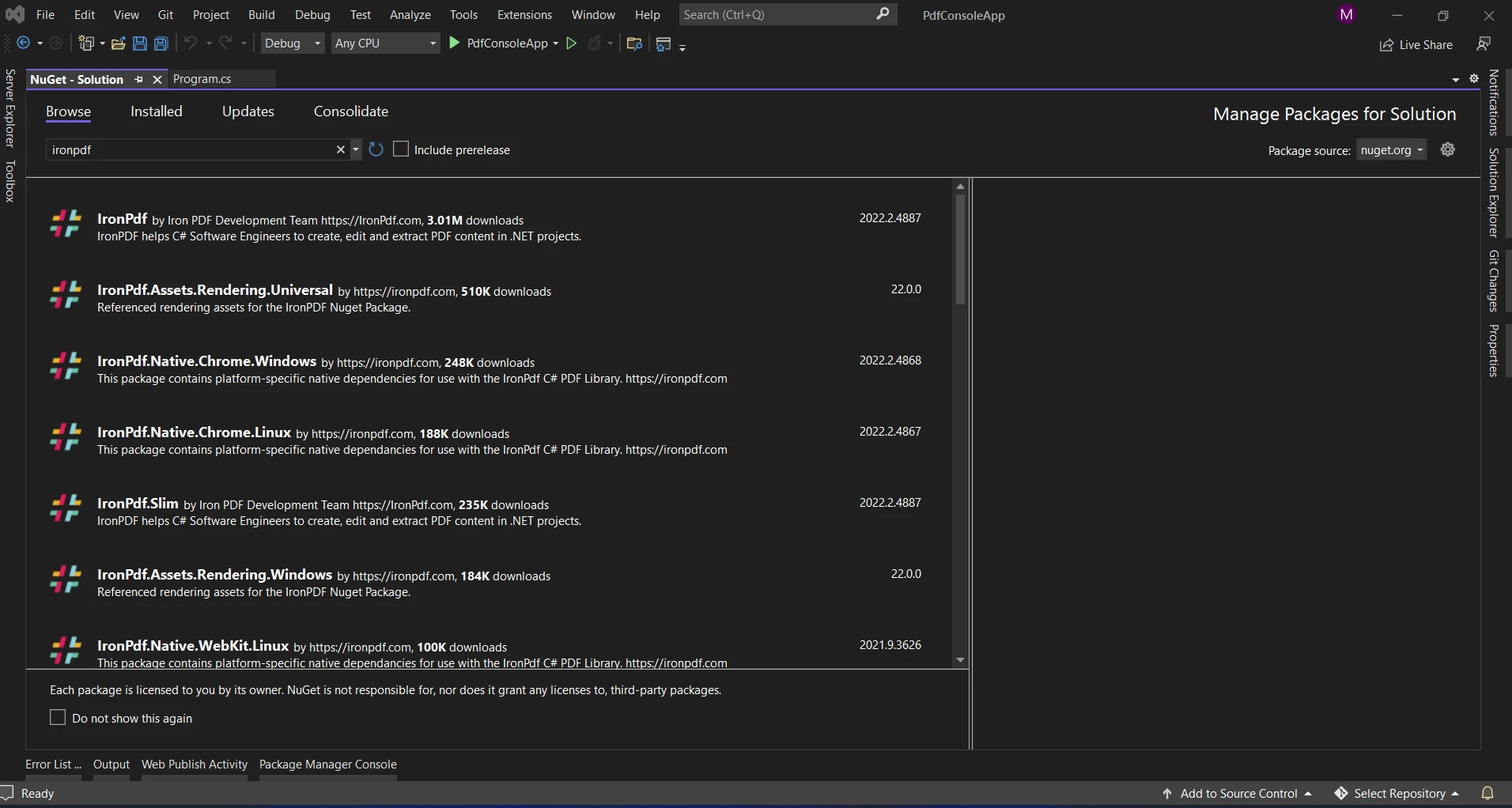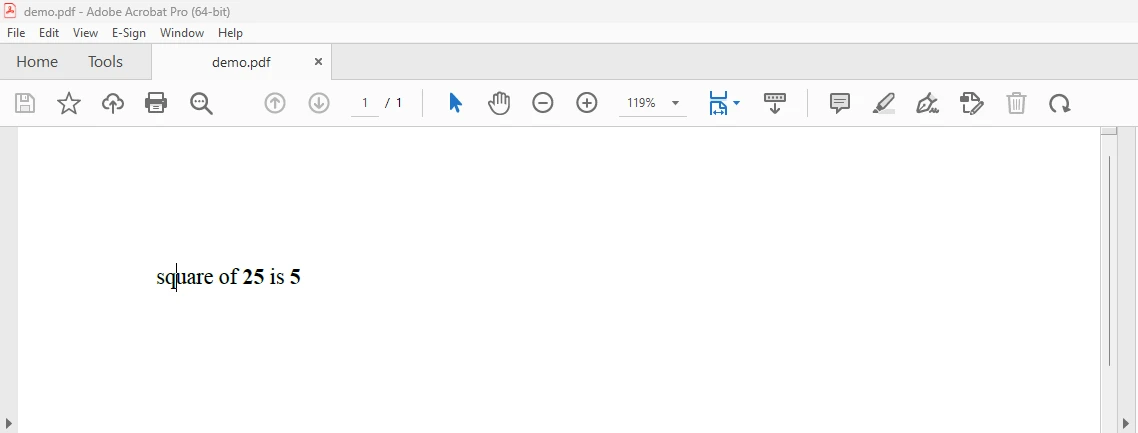Test in a live environment
Test in production without watermarks.
Works wherever you need it to.
Programmers can create strings using string interpolation, which involves immediately evaluating and inserting expressions or variables into the constant string object literal. Verbatim strings containing placeholders that are replaced by the values of specified expressions or variables can be created with interpolated strings.
Compared to more conventional techniques like string concatenation or the use of format string specifiers, interpolated string representation makes it easier to combine text with dynamic data in a variety of programming languages that allow this feature, making code more legible and concise. In this article, we are going to learn about the C# string interpolation expression result.
The following are the resulting string interpolation features:
String interpolation in C# allows developers to embed expressions or variables directly into string literals. It simplifies the process of constructing multi-line strings by providing a concise and readable syntax. If we use string interpolation directly the compile will place string.Format method in its place.
Components of the literal string interpolation structure:
Add the $ sign to the end of a string literal to indicate that it is an interpolated string. White space cannot appear between the $ and the " that starts a string literal.
{<interpolationExpression>[,<alignment>][:<formatString>]} //constant expression{<interpolationExpression>[,<alignment>][:<formatString>]} //constant expressionIf True Then
'INSTANT VB TODO TASK: The following line uses invalid syntax:
' <interpolationExpression>[,<alignment>][:<formatString>]} 'constant expressionUse several $ characters to begin an interpolated raw string literal to incorporate { and } characters in the returned string. Any sequence of { or } characters that is less than the total number of $ characters is inserted into the output string when you do that. To encapsulate any interpolation expression in that string, the number of braces used must match the amount of $ characters. As demonstrated by the following example below:
int x = 25;
Console.WriteLine($"square of {x} is {Math.Sqrt(x)}"); //string outputint x = 25;
Console.WriteLine($"square of {x} is {Math.Sqrt(x)}"); //string outputDim x As Integer = 25
Console.WriteLine($"square of {x} is {Math.Sqrt(x)}") 'string outputOutput:

A highlight of IronPDF is its HTML to PDF feature, preserving all layouts and styles. It converts web content into PDFs, perfect for reports, invoices, and documentation. You can easily convert HTML files, URLs, and HTML strings to PDFs.
using IronPdf;
class Program
{
static void Main(string[] args)
{
var renderer = new ChromePdfRenderer();
// 1. Convert HTML String to PDF
var htmlContent = "<h1>Hello, IronPDF!</h1><p>This is a PDF from an HTML string.</p>";
var pdfFromHtmlString = renderer.RenderHtmlAsPdf(htmlContent);
pdfFromHtmlString.SaveAs("HTMLStringToPDF.pdf");
// 2. Convert HTML File to PDF
var htmlFilePath = "path_to_your_html_file.html"; // Specify the path to your HTML file
var pdfFromHtmlFile = renderer.RenderHtmlFileAsPdf(htmlFilePath);
pdfFromHtmlFile.SaveAs("HTMLFileToPDF.pdf");
// 3. Convert URL to PDF
var url = "http://ironpdf.com"; // Specify the URL
var pdfFromUrl = renderer.RenderUrlAsPdf(url);
pdfFromUrl.SaveAs("URLToPDF.pdf");
}
}using IronPdf;
class Program
{
static void Main(string[] args)
{
var renderer = new ChromePdfRenderer();
// 1. Convert HTML String to PDF
var htmlContent = "<h1>Hello, IronPDF!</h1><p>This is a PDF from an HTML string.</p>";
var pdfFromHtmlString = renderer.RenderHtmlAsPdf(htmlContent);
pdfFromHtmlString.SaveAs("HTMLStringToPDF.pdf");
// 2. Convert HTML File to PDF
var htmlFilePath = "path_to_your_html_file.html"; // Specify the path to your HTML file
var pdfFromHtmlFile = renderer.RenderHtmlFileAsPdf(htmlFilePath);
pdfFromHtmlFile.SaveAs("HTMLFileToPDF.pdf");
// 3. Convert URL to PDF
var url = "http://ironpdf.com"; // Specify the URL
var pdfFromUrl = renderer.RenderUrlAsPdf(url);
pdfFromUrl.SaveAs("URLToPDF.pdf");
}
}Imports IronPdf
Friend Class Program
Shared Sub Main(ByVal args() As String)
Dim renderer = New ChromePdfRenderer()
' 1. Convert HTML String to PDF
Dim htmlContent = "<h1>Hello, IronPDF!</h1><p>This is a PDF from an HTML string.</p>"
Dim pdfFromHtmlString = renderer.RenderHtmlAsPdf(htmlContent)
pdfFromHtmlString.SaveAs("HTMLStringToPDF.pdf")
' 2. Convert HTML File to PDF
Dim htmlFilePath = "path_to_your_html_file.html" ' Specify the path to your HTML file
Dim pdfFromHtmlFile = renderer.RenderHtmlFileAsPdf(htmlFilePath)
pdfFromHtmlFile.SaveAs("HTMLFileToPDF.pdf")
' 3. Convert URL to PDF
Dim url = "http://ironpdf.com" ' Specify the URL
Dim pdfFromUrl = renderer.RenderUrlAsPdf(url)
pdfFromUrl.SaveAs("URLToPDF.pdf")
End Sub
End ClassGet the IronPDF library, as it is required for the next fix. To do this, enter the following code into the Package Manager:
Install-Package IronPdf

Alternatively, you may use the NuGet Package Manager to search for the package "IronPDF". We may pick and download the necessary package from this list of all the NuGet packages associated with IronPDF.

The example code shows how we can create a PDF using the string interpolation method and interpolated expression. For a single interpolation expression, alignment specifiers and format strings can be combined.
using IronPdf;
namespace ConsoleApp1
{
internal class Program
{
static void Main(string [] args)
{
int x = 25;
//interpolated string starts
var outputstr = $@"square of <b>{x}</b> is <b>{Math.Sqrt(x)}</b>";
var pdfcreate = ChromePdfRenderer.StaticRenderHtmlAsPdf(outputstr);
pdfcreate.SaveAs("demo.pdf");
}
}
}using IronPdf;
namespace ConsoleApp1
{
internal class Program
{
static void Main(string [] args)
{
int x = 25;
//interpolated string starts
var outputstr = $@"square of <b>{x}</b> is <b>{Math.Sqrt(x)}</b>";
var pdfcreate = ChromePdfRenderer.StaticRenderHtmlAsPdf(outputstr);
pdfcreate.SaveAs("demo.pdf");
}
}
}Imports IronPdf
Namespace ConsoleApp1
Friend Class Program
Shared Sub Main(ByVal args() As String)
Dim x As Integer = 25
'interpolated string starts
Dim outputstr = $"square of <b>{x}</b> is <b>{Math.Sqrt(x)}</b>"
Dim pdfcreate = ChromePdfRenderer.StaticRenderHtmlAsPdf(outputstr)
pdfcreate.SaveAs("demo.pdf")
End Sub
End Class
End NamespaceIn the above code, the given string interpolation helps us to convert the string representation into the desired output string name. We are also using multiple strings to interpolate into a single string. And with the help of the IronPDF, we are creating the PDF for the formatted strings. Likewise, we can create any number of PDF string representations into a PDF with the help of IronPDF. We can also format string using string.Format method.
Result:

To know more about the IronPDF refer here.
To sum up, C#'s string interpolation is a strong and effective feature that makes it easier to create strings by allowing expressions to be directly embedded into them. When compared to conventional string concatenation or formatting techniques, it provides a syntax that is easier to read and comprehend using opening and closing brace.
IronPDF offers a permanent license, upgrade options, a year of software maintenance, and a 30-day money-back guarantee in the $749 Lite bundle. Users can evaluate the product in practical application settings for thirty days during the watermarked trial period. Please visit the supplied link to learn more about IronPDF's costs, licensing, and trial version. To learn more about the Iron Software products, check here.
9 .NET API products for your office documents








